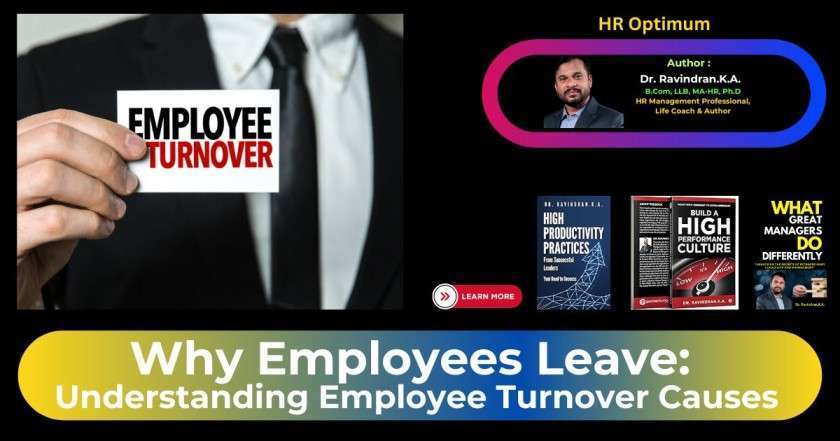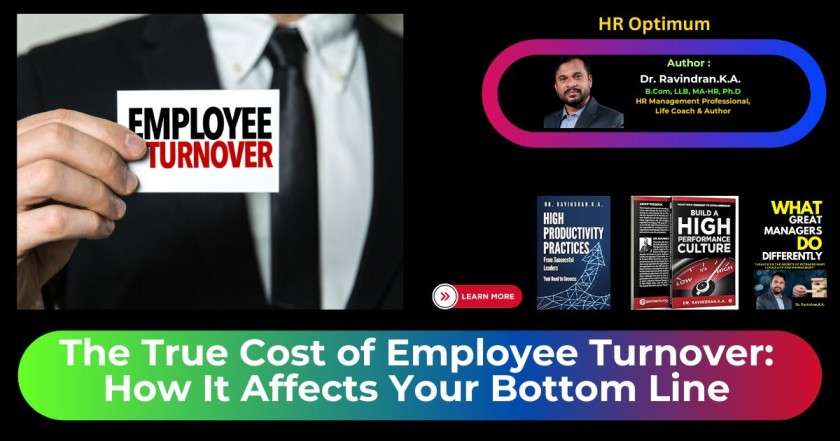“Proven Techniques for Reducing Employee Turnover in Your Organization”
In today’s business world, keeping top talent is vital for success. The U.S. sees a high annual turnover rate, costing it $1 trillion. So, how can you stop your best workers from leaving? Understanding why employees leave and using proven methods can create a loyal, engaged team.
Thank you for reading this post, don't forget to subscribe!Have you heard, “People don’t leave companies, they leave managers”? It’s essential to make a workplace that employees want to stick around for. We’ll explore key strategies to cut down on turnover and build a strong, productive team.

Key Takeaways
- Employee turnover costs the U.S. economy $1 trillion annually, making it a critical issue for businesses.
- Factors like poor management, lack of work-life balance, and inadequate compensation contribute to high turnover rates.
- Strategies like offering competitive benefits, fostering a positive work culture, and investing in employee development can help reduce turnover.
- Effective onboarding and continuous feedback are essential for retaining top talent.
- Prioritizing employee well-being and creating a sense of purpose can significantly improve loyalty and engagement.
Understanding Employee Turnover
Employee turnover is how fast workers leave and new ones join. It looks at how many employees leave a business each year. If lots of employees leave, it might mean there are problems like people not being happy or there’s bad management. But if only a few leave, it could show that people enjoy working there.
What is Employee Turnover?
There are two kinds of employee turnover: voluntary and involuntary. If an employee decides to leave, that’s voluntary. If the company ends their job, it’s involuntary. It’s important to know the difference because this helps in finding the right solutions to prevent people from leaving.
Looking at why employees leave and staying is key to reducing turnover. Businesses that keep their employees engaged have fewer people leaving. Also, employees who think they’ll stay with a company for a long time actually do. They stay almost four times longer than those who think they’ll leave soon.
“Gallup estimates that U.S. businesses lose up to $1 trillion annually due to voluntary turnover.”
Figuring out how much it costs when employees leave is important. It includes things like hiring new people, training them, and filling in until they start. Companies should not count people who leave because they retire or move to a different part of the company.
Finding out why people leave their jobs helps in making better plans to stop it. You can do this by looking at HR data, talking to people when they leave, and doing surveys. After finding out the reasons, it’s all about making the job better for those who are there. This can be done by offering chances to grow, listening to what employees want, and changing job duties to make them more satisfying.
The Impact of High Employee Turnover
High employee turnover can greatly affect a company. It lowers efficiency and profits. A main problem is the cost of finding and hiring new staff. This makes the company spend more money.
When people leave, the company might lose its clients who followed those people. This hits the company’s income. Plus, good job seekers might not want to join a company where people leave a lot. This makes the HR team’s job hard.
Employee morale gets hurt when many leave. This means less work gets done. It also makes people think less of the company, which is bad inside and out. Workers left may also have to do more, which stresses them.
They might not do their best work because of all the extra tasks. This can lead to a negative work atmosphere. It also makes those left feeling down.
When experienced people leave, they take their knowledge with them. This makes it tough to keep things running smoothly. This affects how well the company does its tasks.
| Metric | Impact of High Turnover |
|---|---|
| Lost productivity costs | Up to $1.8 trillion annually in the United States |
| Client retention | Clients may follow departing key employees, affecting the client base |
| Talent acquisition | Candidates may be hesitant to apply to companies with high turnover rates |
| Company reputation | High turnover can negatively impact the company’s reputation |
| Employee morale | High turnover can lead to decreased employee morale and engagement |
| Productivity | Overworked teams caused by high turnover can lead to decreased productivity |
| Institutional knowledge | Experienced employees taking their expertise with them when they leave |
| Team dynamics | High turnover can disrupt team dynamics and efficient workflows |
In brief, high turnover is bad for a company. It means more costs, less work getting done, and lower morale. It also means losing important knowledge and a worse company image.
To fix these issues, companies should focus on keeping their staff. This is key to having a successful and competitive team.
“Turnover can be extremely damaging to a company’s culture, productivity, and bottom line. Reducing turnover should be a top priority for any organization.”
Causes of Employee Turnover
Employee turnover can greatly affect a company’s success. It’s key to know why employees leave. This info helps make strategies to keep the best workers. Here are some main reasons people leave jobs:
- Lack of purpose and career growth – Employees want to grow and see a future in their job. If they don’t have these chances, they might leave to find them elsewhere.
- Poor management and leadership – Bad bosses can make a good job feel bad. About 82% of people think about quitting because of poor management.
- Work-life imbalance and employee burnout – Working too much can burn people out. This can make 57% of employees feel so disrespected that they look for new jobs.
There are other reasons for high turnover, too. For instance:
- Organizational culture mismatch – Not fitting in with the company culture can cause disengagement. This can lead people to quit.
- Lack of recognition and poor compensation – Feeling like you’re not valued or paid enough makes many leave. 63% say low pay is why they go, and 43% say it’s bad benefits.
| Cause of Turnover | Percentage of Employees Affected |
|---|---|
| Low pay | 63% |
| Poor benefits | 43% |
| Lack of career advancement | 63% |
| Bad management | 82% |
| Feeling disrespected | 57% |
Organizations can change these things to keep their team. By working on these issues, they can keep their workers happier. Then, their team can do better work.
“The number one reason people quit their jobs is that they don’t feel appreciated. It’s a basic human need to feel appreciated.” – Bob Nelson, author and employee recognition expert.
Importance of Reducing Employee Turnover
Keeping talented staff helps companies do better over time. It cuts costs from hiring, training, and lost work. Plus, they bring valuable knowledge, keeping things running smoothly and improving decisions.
Benefits of Retaining Employees
When employees stick around, a lot of good things happen. The company performs better and makes more money. Let’s look at how:
- Cost Savings: Replacing workers is expensive. When employees stay, companies don’t have to spend that money again and again. This means they can do better financially.
- Productivity Gains: Experienced staff understand the company’s ways very well. They’re more productive, knowing what needs to be done and how.
- Knowledge Retention: Long-term employees keep important knowledge in the company. This means the company runs without any hiccups and makes smarter choices.
- Positive Work Environment: Low turnover makes work feel more stable and welcoming. This boosts everyone’s spirits and satisfaction with their jobs.
- Improved Reputation: Companies that keep their staff are seen as great places to work. This attracts excellent new employees and improves how everyone sees the company.
By keeping their staff, companies save a lot of money. They also make the workplace a happier place, which boosts everyone’s mood and makes everything run better.
“Voluntary turnover alone costs US businesses about a trillion dollars a year.”
Strategies to Reduce Employee Turnover
Hire the Right People
Hiring the right folks from the start is key to lessening employee turnover. Look closely at candidates during interviews. Make sure they gel with your company culture. This smart approach will likely cut down on people leaving later on.
It’s key to be clear about what your company culture is and share this from the get-go. This helps attract those who share your values. Also, having coworkers not in management involved in interviews can give a good view of a candidate’s cultural fit.
A Forbes report says a happy work setting boosts output and keeps employees longer. That outperforms companies not giving company culture enough attention. What’s more, companies with super involved employees see a 21% uptick in profits.
Choosing the right people and focusing on a good cultural fit can greatly cut down on leaving staff. It also helps build a team that’s more into their work and stays put longer.
Getting the right people on board is pivotal for low employee turnover. Putting emphasis on cultural fit and a solid employee onboarding can lay the groundwork for keeping staff for the long haul.
Offer Competitive Compensation and Benefits
Providing good pay and benefits helps companies keep their best employees. It’s key in today’s job market. When companies pay well, they get strong candidates and keep turnover low. They must review and adjust pay often to stay attractive.
Adding bonuses for good work and meeting goals keeps workers motivated. It’s also important to check pay for fairness by regularly reviewing if any racial or gender gaps exist.
Good health coverage, life insurance, and retirement plans make a job more attractive. Paid leave and mental health support are also high on workers’ lists of desired benefits. An 88% majority value health plans and time off. Plus, 66% say paid parental leave is crucial.
Companies with great benefits are better at keeping their top workers. In 2017, three-quarters of employees would stick around for better benefits. But, not explaining benefits well can lead to unhappy workers. This confusion may even start some looking for new jobs.
By putting money into fair pay and great benefits, companies show they care about their employees. Workers feel more satisfied and are likely to stay longer. This, in turn, helps create a work culture everyone wants to be part of.
In today’s competitive job market, companies need to up their game with competitive pay and good benefits. This makes their workplace better liked and helps keep employees happy. It’s a win-win that fights high staff turnover.
Foster a Positive Work Environment
Fostering a happy work environment is key to keeping employees. It means making sure they feel respected, valued, and helped. Doing this boosts employee engagement, makes work-life balance better, and builds a company culture they want to be part of.
Showing employee appreciation is crucial for a good workplace. This means praising them, having parties, and noting their successes. This morale boost leads to workers staying longer. In fact, saying thanks often can lower job leaving by 30%.
Allowing a good work-life balance is very important too. It might include working from home, choosing hours, and having time off. When work fits with life, people stay put. It also shows the company really cares about them.
Building a strong company culture matters a lot. It’s about teamwork and feeling you belong. Things like working together, talking openly, and always learning help create this. A workplace where everyone is in it together is a place people want to stay.
| Statistic | Impact |
|---|---|
| Providing a flexible schedule for employees can increase productivity and work-life balance. | Embracing flexible work options correlates with a 30% rise in employee morale and a 25% increase in employee loyalty. |
| Incentivizing excellence in performance positively impacts employee retention. | Recognizing and expressing gratitude for employees’ hard work regularly has been linked to a 30% improvement in employee retention rates. |
| Engaging in professional development activities improves job satisfaction and contributes to a positive work environment. | Investing in employee growth through training programs and mentorship initiatives leads to a 20% increase in productivity and a 25% decrease in turnover among highly skilled employees. |
Making a great work setting by valuing employees, caring about their balance, and building a supportive culture really pays off. It makes people stick around and want to do their best for the company’s success.
Employee Retention
Keeping the best people is vital for any business to grow. Apart from what we’ve talked about, there are more ways to keep your team happy and loyal. These methods reduce the number of people leaving.
It’s important to show your team that they can grow with the company. This means offering training, mentorship, and chances to move up. Such things make employees want to stay, as they see a future here.
Having regular talks about their work is key. These talks, with helpful pointers, show you care about their growth. It’s a sign that the company values them.
Making sure your team gets good benefits is crucial. This can be a good salary, health insurance, or a balance between work and life. It makes your company more attractive. Also, over time, you need to keep improving these benefits. People’s needs change, and you want to keep up.
Caring for your team’s health, both physical and mental, is also very important. You can do this by offering ways to stay healthy and managing stress. Letting them work from home at times can also help.
“The best way to keep top workers is to give them a career path they find fulfilling, create a positive place to work, and focus on their health. These not only lower the cost of losing workers but also build a team that works hard and stays.”
By focusing on a range of employee retention strategies, businesses can form a workplace people love. This can then attract and keep the best talent. The end result is more success and growth over time.
Effective Onboarding and Training
Importance of Onboarding
Starting a new job is a major moment for anyone. It shapes how they’ll feel about the job in the future. A great start can mean they stay longer and work harder. Studies back this up, saying people with a good onboarding program really commit to their new job.
But sadly, lots of companies don’t do this well. A study shows only a tiny 12% felt their start was handled really well. Bad starts lead to big problems later, like more people leaving, low work results, and unhappy vibes. This is why it’s key for every organization to nail the start for their new employees.
Putting effort into onboarding pays off big time. Fancy training and a solid start make a new worker get good at their job quickly. This helps the whole company do better. Plus, it makes 82% more people decide to stick with the job. Talk about a win-win!
| Onboarding Statistics | Findings |
|---|---|
| Increased Employee Retention | Effective onboarding can increase employee retention by 82%. |
| Improved Productivity | Well-trained and properly onboarded employees are more likely to become productive quickly. |
| Increased Employee Commitment | Employees who undergo a well-designed onboarding program are 18 times more likely to feel committed to their new employer. |
| Gallup Study on Onboarding | Only 12% of employees strongly agreed that their organization did a great job of onboarding new hires. |
By making onboarding a priority, companies increase how much workers care, how fast they become useful, and make the workplace feel good. It’s not just about keeping people from leaving; it’s about laying a solid foundation for staying and growing together.
Continuous Feedback and Performance Management
Having regular performance reviews and giving continuous employee feedback is key to keeping top workers. It should focus on how well employees do, ways to get better, and future goals. Letting employees tell how they think they’re doing and share feedback makes this even better.
Helping employees grow through performance management shows you’re dedicated to their success. This approach might cut down people leaving. A study on Patagonia found that those who used a digital feedback system got better at meeting their goals. They also got 20% higher bonuses.
Most people say getting negative feedback actually helps them work better, and it does right away. Saying “thank you” often can also make employees more motivated. Companies that do this see fewer people quitting their jobs.
Getting feedback quickly lets you fix problems faster and stay on the right path. This makes leaders seem more friendly and helpful. Everyone wins with ongoing performance management: employees, the work atmosphere, and loyalty.
“Employees who receive frequent feedback have a better understanding of their strengths and areas for improvement.”
Using feedback and goal setting in performance reviews helps keep good workers and grow your company. Putting effort into your people’s success builds a stronger and more committed team.
Invest in Employee Wellbeing
Investing in employee wellbeing helps reduce turnover in your organization. It means making sure your team has a good balance between work and life, supporting their mental health, and meeting their physical and emotional needs. This creates an environment where everyone can do their best.
Offering flexible work, lots of time off, and help with stress and burnout makes a big difference. Employees who can balance work with personal life are happier and stay longer. They’re less likely to burn out.
Organizations that focus on their employees’ wellbeing see big rewards. For instance, Johnson & Johnson saved $250 million in healthcare costs by investing in wellness. Their return on this investment was $2.71 for every dollar spent from 2002 to 2008.
By investing in your team’s wellbeing, you not only keep them around longer but also make them more engaged and satisfied. This shows you care about their overall health. It helps attract and keep the best people in your company.
| Benefit | Impact |
|---|---|
| Increased productivity and performance | Employee wellness programs have been shown to boost focus, energy levels, and cognitive performance, leading to increased productivity. |
| Decreased healthcare costs | Investing in employee well-being can result in reduced healthcare expenses as wellness programs target preventive care, chronic disease management, and lifestyle-related conditions. |
| Improved employee engagement and morale | Studies consistently show that engaged employees are more committed, loyal, and enthusiastic about their work, leading to lower turnover rates and higher employee retention when well-being is prioritized. |
When you take care of your whole team’s wellbeing, you create a culture of success. This culture boosts employee engagement and lowers the cost of losing people, helping your organization do better in the long run.
“The ROI on comprehensive, well-run employee wellness programs can be as high as 6 to 1.”
Key Strategies for Promoting Employee Wellbeing
- Offer flexible work arrangements and generous paid time off
- Provide on-site fitness facilities, fitness challenges, and wellness workshops
- Implement stress management programs like mindfulness training and relaxation techniques
- Offer comprehensive healthcare benefits and mental health support
- Foster a positive work culture that values work-life balance and employee development
Conclusion
Reducing employee turnover is key for companies to maintain a skilled, engaged workforce. This improves productivity and long-term success. A strategy focusing on hiring well, offering good pay and benefits, and creating a positive workplace is vital. So is providing chances for growth and caring for the team’s health.
These steps can lead to a strong, motivated team that boosts business growth. Retaining employees and nurturing a positive culture are critical. They increase workers’ involvement and satisfaction while ensuring the company’s future success.
Companies that prize keeping their staff save on hiring and training costs. They also gain from more work done, better profits, and a wealth of knowledge. Investing in employees is a smart move. It helps a company stand out and grow in the competitive business world.
FAQ
What is employee turnover?
Employee turnover is how fast workers leave and get replaced in a company. This rate shows how many employees leave in a specific time, often a year, and are replaced.
What are the main causes of employee turnover?
Many things can lead to employees leaving, such as feeling like they lack a clear purpose or a chance to grow. It can also happen because of bad management, too much work, and not being happy with the company’s values. Not feeling appreciated or paid enough can drive employees away.
What are the benefits of retaining employees?
Keeping employees for longer helps a company in many ways. It keeps valuable knowledge, and operations smoother. This makes a more positive workplace and improves morale and productivity.
How can companies hire the right people to reduce turnover?
Hiring the right people can prevent turnover. Companies should pick candidates who fit their culture well. This makes it more likely they’ll stay long-term.
How can companies offer competitive compensation and benefits to retain employees?
Offering competitive pay and good benefits brings talented people in and keeps them. Sufficient salaries and regular raises are essential. Bonuses for good work and fair pay for all are also key. Benefits like health coverage and paid time off are popular and keep employees happy.
How can companies foster a positive work environment to reduce employee turnover?
Creating a positive work atmosphere is crucial. Appreciating employees with programs and celebrations shows they matter. Offering a healthy work-life balance and mental health support makes them feel cared for. A strong culture of belonging boosts their stay.
What are other effective strategies for reducing employee turnover?
Companies should offer clear paths for career growth and support employee performance. Benefits and wellbeing programs should be up to date and care for their needs. Training, feedback, and advancement chances show the company’s investment in their future.
Why is the onboarding process important for reducing employee turnover?
A good onboarding program can significantly reduce turnover. It should introduce newcomers to the company well and set clear goals. New hires that feel welcomed are more loyal to their employer.
How can companies invest in employee wellbeing to reduce turnover?
Supporting employee wellbeing directly impacts turnover. It means a balanced life, mental health aid, and benefits focused on health and happiness. Helping them manage stress and enjoy paid time off makes for happier, more dedicated employees.
 hroptimum
hroptimum





